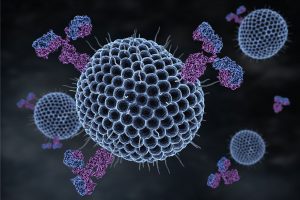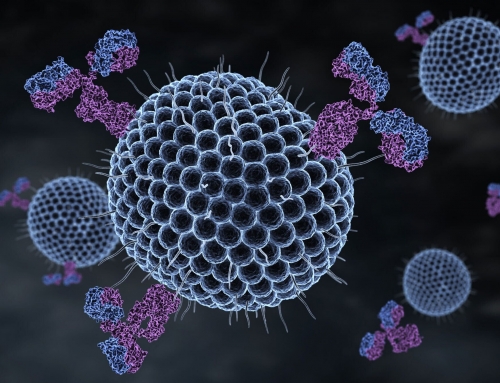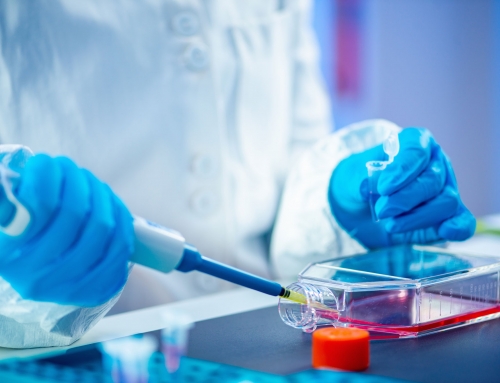Viral vectors are at the cutting edge of gene therapy, cancer treatment, and vaccine development, but which vector is right for which therapy depends on a great number of factors.
Advancements in the last few decades have led to much wider use of viral vectors in gene therapy, vaccines, and oncolytic therapies. As vaccines, they create an immune response in the patient. As oncolytic therapies, they specifically target and kill tumor cells. As gene therapy, they replace or suppress certain genes in the patient. Which viral vector system is preferable depends on its intended use.
The type of viral vector affects its suitability for specific therapies.
 Viruses can have genomes of single-stranded or double-stranded RNA or DNA. The type of virus affects the type of cell that can be treated and whether the expression will be long or short term.
Viruses can have genomes of single-stranded or double-stranded RNA or DNA. The type of virus affects the type of cell that can be treated and whether the expression will be long or short term.
Retroviruses – those with RNA genomes – have a tendency to insert randomly into the host genome, and so until recently have not been a preferred vector. They can infect actively dividing cells, so cells like neurons are not treatable. Their advantage is that they can carry a great deal of genetic information compared to the more common types of viral vectors. Further, retroviruses can be modified such that they do not lyse the host cell. Further, because they insert their genome into the host’s, they are well-suited for therapies requiring long-term expression.
Lentivirus is a type of virus that can infect both dividing and non-dividing host cells. They cannot, however, reproduce on their own, so they need to be introduced with a helper virus, which supplies the genes responsible for reproduction. Alternatively, the genes from both virus and helper virus can be introduced to a packaging cell line, in which cells are used as microfactories for the production of the desired viral vector.
By far the most common viral vector is the Adeno-associated virus, or AAV, which is preferred because it does not insert its genome into the host cell, can infect both dividing and non-dividing cells, and creates a predictably low immune response. The drawbacks of AAV are that it is not well-suited to long-term expression, because its genome is not taken up by the host cell, and that it is unable to carry very large gene sequences.
Proper viral vector development requires that manufacturers address safety concerns unique to viruses.
 Some wild-type viruses are capable or wreaking havoc on their hosts. A first necessary step in viral vector development is removing the genes of the wild-type virus responsible for replication, if the virus does not naturally require a helper virus. The virus can then integrate its genome into the host cell, but not produce new viruses. Without this precaution, it becomes nearly impossible to control which cells are transfected.
Some wild-type viruses are capable or wreaking havoc on their hosts. A first necessary step in viral vector development is removing the genes of the wild-type virus responsible for replication, if the virus does not naturally require a helper virus. The virus can then integrate its genome into the host cell, but not produce new viruses. Without this precaution, it becomes nearly impossible to control which cells are transfected.
How the viral vector affects the physiology of the host cell is another safety concern of great importance. Ideally, the viral vector will only minimally affect the physiology of the host.
It is also necessary to consider which cells are to be targeted, and whether that range is broad or narrow. The viral vector must specifically target only the desired cells. For instance, AAV can infect a broad range of cells, while Newcastle Disease Virus (NDV) can only replicate in tumor cells. The former has a broad range of applications while the latter is used primarily as a vector for cancer therapies.
The genome of the virus must also be stable, meaning it does rearrange or reorganize its genetic code. Retroviruses are prone to this, making their expression less predictable and therefore requiring more genetic modification to be useful. Recent advancements have allowed for the stabilization of many retroviral genomes, however.
A final consideration is identification. The viral vector must create proteins which are detectable by current technology, so that their efficacy can be tracked, monitored, and studied. Whether this is conferring antibiotic resistance to the host, or creating proteins detectable with dyes or other technology, the viral vector must have some way of being tracked.
Packing cell lines can address some important safety concerns while also allowing for long-term expression.
 Retroviruses insert their genome into their host cell’s, meaning that all subsequent daughter cells contain the viral genes. This is very valuable if long-term expression is a desired aspect of the particular therapy. Packaging cell lines greatly simplify the process of producing these viral vectors.
Retroviruses insert their genome into their host cell’s, meaning that all subsequent daughter cells contain the viral genes. This is very valuable if long-term expression is a desired aspect of the particular therapy. Packaging cell lines greatly simplify the process of producing these viral vectors.
In packaging cell lines, The genes coding for the production of the capsid and envelope are removed, replaced with therapeutic genes, and introduced separate from the modified viral genome. This means the cell has all the genes required to produce viral vectors containing the therapeutic genes, which can then be harvested.
The use of viral vectors for therapy has a tumultuous history, with early reports of some patients developing leukemia during trials. Wild-type retroviruses can insert their genes into any part of the host genome, including areas responsible for replication. This can disrupt important cellular functions, sometimes even leading to cancers. Fortunately, the use of zinc finger nucleases allows for more predictable and controllable insertion of the modified viral genome.
Which type of vector and which manufacturing process is right depends on the particular therapy. Though there are a great many factors to consider in the development and manufacture of viral vectors, the technology is improving rapidly and is an area of medicine with great potential.




